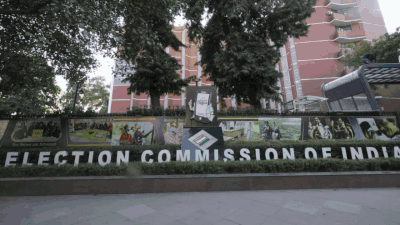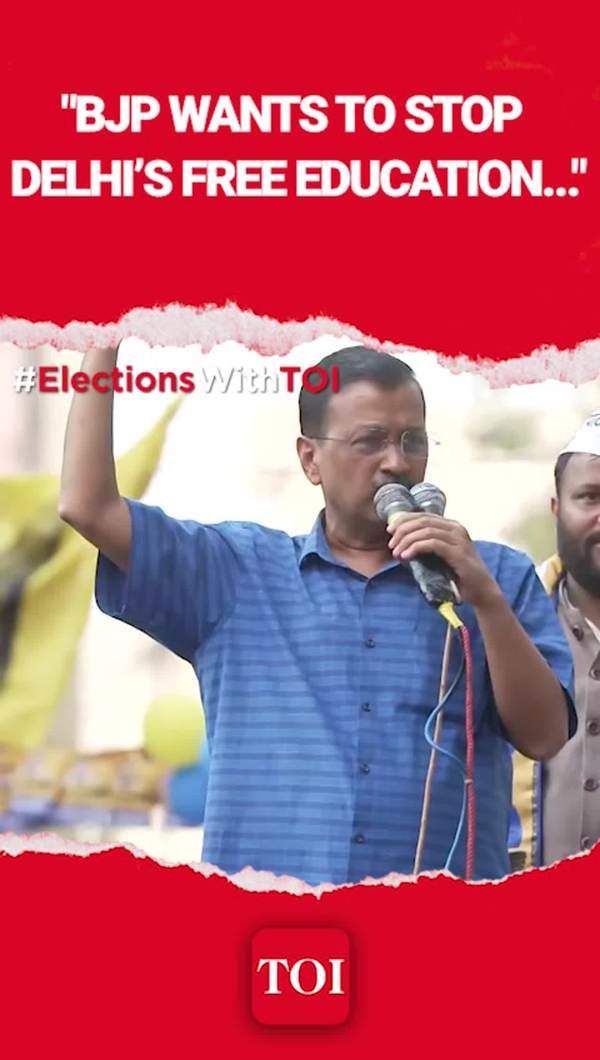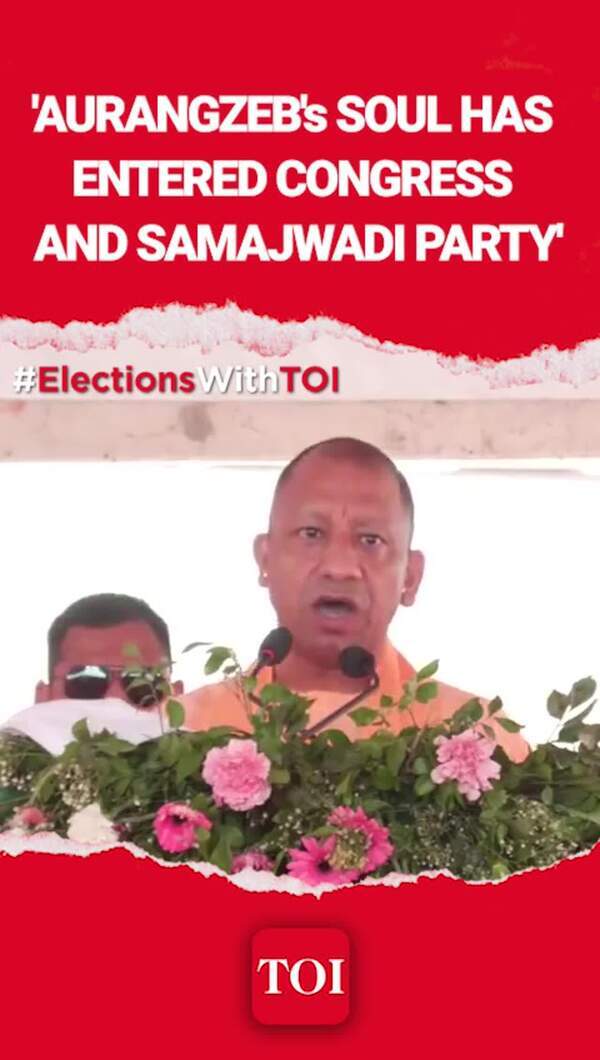- News
- India News
- Explain increase in voting percentage days after polling, SC tells EC
Trending
Explain increase in voting percentage days after polling, SC tells EC
The Supreme Court on Friday sought the Election Commission's response to an appeal by the Association for Democratic Reforms, an NGO, expressing concern about the potential replacement of electronic voting equipment, citing a significant increase in final voting percentage statistics days after polling. On April 26, the SC had dismissed ADR's plea for return to ballot papers and its suspicion of EVMs.

NEW DELHI: Supreme Court on Friday sought Election Commission's response to the application by an NGO, Association for Democratic Reforms, expressing apprehension about possible replacement of electronic voting machines citing the big increase in final voting percentage figures days after polling.
A bench of CJI D Y Chandrachud and Justices J B Pardiwala and Manoj Misra ordered the EC to file its response to ADR's application by May 24, when it will be heard by a vacation bench during the court's summer break, which commences from Monday. ADR has sought a direction to the EC to publish voting data within 48 hours of close of polling.
On April 26, the SC had dismissed ADR's plea for return to ballot papers and its suspicion of EVMs.
With the court taking up the same NGO’s plea again doubting the fairness of the electoral process, EC’s counsel, senior advocate Maninder Singh, emphasised that senior officials of the poll panel had answered every doubt expressed by the NGO’s counsel Prashant Bhushan and a bench of Justices Sanjiv Khanna and Dipankar Datta, after several interactions with EC officials, had on April 26 dismissed the ‘back to ballot’ plea and rejected the doubts against EVMs by saying they were trustworthy.
“Just because Bhushan feels like bringing anything through an application, that too in a petition pending since 2019, the court should not entertain it. These are attempts to impede the election process, four phases of which have been completed smoothly,” Singh said.
The CJI-led bench took exception to the charge of preferential treatment being given to Bhushan and said, “That is a wrong charge. If we find an issue requires the court’s attention and intervention, we will do so irrespective of who brings it before the court. If required, we will sit the whole night to hear a matter.” In fact, the bench heard the plea at 6.10pm, hours after the scheduled end of business hours.
On April 26, Justices Khanna and Datta had said, “In our considered opinion, EVMs are simple, secure and user-friendly. Voters, candidates and their representatives, and officials of the EC, are aware of the nitty-gritty of the EVM system. Incorporation of the VVPAT system fortifies the principle of vote verifiability, thereby enhancing the overall accountability of the electoral process.”
Justices Khanna and Datta had also detailed the process of calculating and publishing voting percentage under Form 17C — the most crucial part for ascertaining the number of votes cast, and said the voting percentage was provided to each polling agent.
ADR had moved the court with an application soon after Congress, TMC and CPM wrote to EC alleging unusual delay in release of final voter turnout figures for phase one and two of the ongoing elections. ADR alleged that voter turnout data for April 19 was published on April 30 and that for the second phase on April 26 was published on April 30, after a delay of 11 and four days, respectively.
ADR said, “The data as published by EC in its press release dated April 30 shows a sharp increase (by about 5-6%) as compared to the initial percentages announced by EC as of 7pm on the day of polling. Inordinate delay in release of final voter turnout data, coupled with the unusually high revision (of over 5%) in the EC’s press note of April 30, and the absence of disaggregated constituency and polling station figures in absolute numbers, has raised concerns and public suspicion regarding the correctness of the said data.
“These apprehensions must be addressed and put to rest. In order to uphold voters’ confidence, it is necessary that the EC be directed to disclose on its website scanned legible copies of Form 17C Part- I (account of votes recorded) of all polling stations which contain the authenticated figures for votes polled within 48 hours of the close of polling.”
A bench of CJI D Y Chandrachud and Justices J B Pardiwala and Manoj Misra ordered the EC to file its response to ADR's application by May 24, when it will be heard by a vacation bench during the court's summer break, which commences from Monday. ADR has sought a direction to the EC to publish voting data within 48 hours of close of polling.
When the bench asked "what is the difficulty in putting the turnout data on the website", the EC counsel said it "took time as we have to collect a lot of data".
On April 26, the SC had dismissed ADR's plea for return to ballot papers and its suspicion of EVMs.
Absence of figures in absolute numbers raises concerns: ADR
With the court taking up the same NGO’s plea again doubting the fairness of the electoral process, EC’s counsel, senior advocate Maninder Singh, emphasised that senior officials of the poll panel had answered every doubt expressed by the NGO’s counsel Prashant Bhushan and a bench of Justices Sanjiv Khanna and Dipankar Datta, after several interactions with EC officials, had on April 26 dismissed the ‘back to ballot’ plea and rejected the doubts against EVMs by saying they were trustworthy.
“Just because Bhushan feels like bringing anything through an application, that too in a petition pending since 2019, the court should not entertain it. These are attempts to impede the election process, four phases of which have been completed smoothly,” Singh said.
The CJI-led bench took exception to the charge of preferential treatment being given to Bhushan and said, “That is a wrong charge. If we find an issue requires the court’s attention and intervention, we will do so irrespective of who brings it before the court. If required, we will sit the whole night to hear a matter.” In fact, the bench heard the plea at 6.10pm, hours after the scheduled end of business hours.
On April 26, Justices Khanna and Datta had said, “In our considered opinion, EVMs are simple, secure and user-friendly. Voters, candidates and their representatives, and officials of the EC, are aware of the nitty-gritty of the EVM system. Incorporation of the VVPAT system fortifies the principle of vote verifiability, thereby enhancing the overall accountability of the electoral process.”
Justices Khanna and Datta had also detailed the process of calculating and publishing voting percentage under Form 17C — the most crucial part for ascertaining the number of votes cast, and said the voting percentage was provided to each polling agent.
ADR had moved the court with an application soon after Congress, TMC and CPM wrote to EC alleging unusual delay in release of final voter turnout figures for phase one and two of the ongoing elections. ADR alleged that voter turnout data for April 19 was published on April 30 and that for the second phase on April 26 was published on April 30, after a delay of 11 and four days, respectively.
ADR said, “The data as published by EC in its press release dated April 30 shows a sharp increase (by about 5-6%) as compared to the initial percentages announced by EC as of 7pm on the day of polling. Inordinate delay in release of final voter turnout data, coupled with the unusually high revision (of over 5%) in the EC’s press note of April 30, and the absence of disaggregated constituency and polling station figures in absolute numbers, has raised concerns and public suspicion regarding the correctness of the said data.
'Heatwave An Excuse. If Contests Are Close, Voters Will Come': Pollster Yashwant Deshmukh
“These apprehensions must be addressed and put to rest. In order to uphold voters’ confidence, it is necessary that the EC be directed to disclose on its website scanned legible copies of Form 17C Part- I (account of votes recorded) of all polling stations which contain the authenticated figures for votes polled within 48 hours of the close of polling.”
End of Article
FOLLOW US ON SOCIAL MEDIA




















